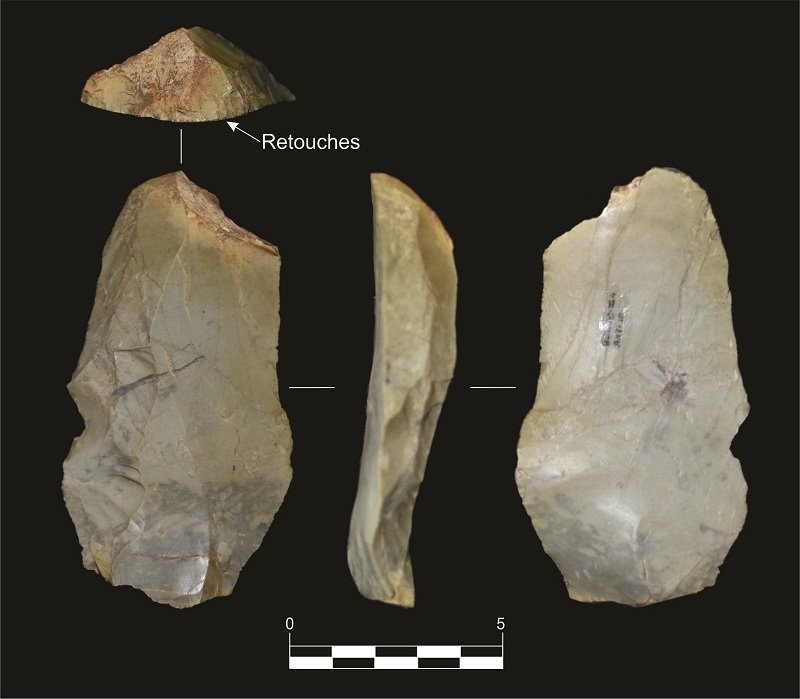Upper Palaeolithic, Solutrean End-scraper

Upper Palaeolithic, Solutrean End-scraper
This magnificent piece is a 20,000-year-old Solutrean scraper from Gorham's Cave, used by the modern humans who occupied the caves. The ‘Solutrean Industry’, c 21,000 to 17,000 years ago, is named after a site in France discovered in 1866, and is characterised by relatively finely-worked tools made with percussion-chipping and pressure-flaking techniques, rather than just by crude flint-knapping with hard or soft hammers. Like other stone tools, the use of scrapers is known from the Lower Palaeolithic (200,000 years ago or even earlier), although this is rare. They are much commoner tools in the Upper Palaeolithic, after about 30,000 years ago.
Our scraper was produced from a large, rather thick carinated nodule of flint (one with a ridge like a boat keel). A series of fine, abrupt retouches was chipped at its distal end (the end opposite the percussion platform, hence the name). Having been made from a large piece of flint, a suitable tool was fashioned without the need to haft it with a wooden handle. Its retouched surface created a strong, right-angled edge suitable for scraping.
Scraping was a very common technique when working on animal hides, in order to remove the remains of flesh, although it was also used on other materials such as wood, bone or antler. Analyses of the microscopic traces of use reveal that the technique included both scraping with the sharpened end as well as with the inverted scraper. Ethnographic studies from Tierra del Fuego (Argentina) support this view.
Published: June 11, 2020
Other similar VM - Archaeology
18-20 Bomb House Lane
PO Box 939,
Gibraltar
